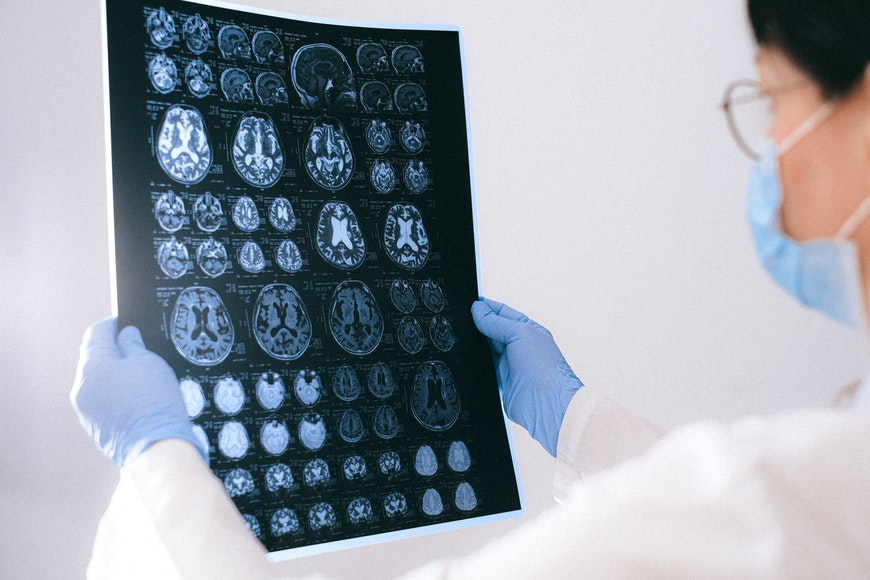
Overview
Multiple sclerosis (MS) is a potentially disabling brain and spinal cord (central nervous system) disease.
In MS, the immune system attacks the myelin (a protective sheath) that covers nerve fibers and causes communication problems between your body and brain. Eventually the disease can cause deterioration of the nerves and permanent damage.
Symptoms and signs of MS vary widely and depend on which nerves are affected and the amount of nerve damage. Some people who have severe MS can lose the ability to walk independently or at all, while others can experience long periods of remission without new symptoms.
There is no cure for multiple sclerosis. Treatment, however, can help modify the course of the disease, speed recovery from attacks, and manage symptoms.
Symptoms
The signs and symptoms of multiple sclerosis may differ greatly between people and over the course of the disease. It depends on the location of the affected nerve fibers.
Symptoms also affect movement such as:
- Electric-shock sensations that occur with certain movements of the neck, especially bending the neck forward.
- Tremor, unsteady gait, or lack of coordination.
- Numbness or weakness in one or more limbs that usually occurs on one side of your body at a time, or the trunk or legs.
Vision problems are common as well, including:
- Blurry vision
- Prolonged double vision
- Partial or complete loss of vision, often with pain during eye movement, usually in one eye at a time
Multiple sclerosis symptoms may also include:
- Dizziness
- Problems with bowel, bladder, and sexual function
- Slurred speech
- Tingling or pain in parts of the body
- Fatigue
Causes
The cause of MS is unknown. It’s considered to be an autoimmune disease in which the body’s immune system attacks its own tissues. In the case of MS, the immune system malfunction destroys the substance coating and protecting nerve fibers in the brain (called myelin).
Myelin is similar to the insulation coating on electrical wires. When the myelin is damaged and the nerve fiber becomes exposed, the messages travelling along the nerve may be slowed or blocked. The nerve itself may also become damaged.
It isn’t clear why MS develops in some and not others. It is suspected that a combination of environmental factors and genetics appears to be responsible.
Diagnosis
There are no specific tests to diagnose multiple sclerosis. Instead, a diagnosis of MS often relies on first ruling out other conditions that could produce similar symptoms and signs which is known as a differential diagnosis.
Your doctor will likely start with a thorough examination and medical history.
Your doctor may then recommend:
- Blood tests. These will help rule out other diseases with similar symptoms to MS. Tests to check for the specific biomarkers associated with MS are currently under development, they can also aid in diagnosing the disease.
- Spinal tap (lumbar puncture). This is a procedure where a small sample of fluid is taken from your spinal canal for lab analysis. This sample can show abnormalities in antibodies associated with MS. A spinal tap can also help rule out other conditions with similar symptoms.
- MRI. This can reveal areas of MS (lesions) on the spinal cord and brain. You might receive an intravenous injection of a contrast material to highlight lesions that indicate the disease is currently active.
- Evoked potential tests. These tests record electrical signs that are produced by your nervous system in response to stimuli. An evoked potential test can use electrical stimuli or visual stimuli, where you match a moving visual pattern or short electrical impulses are applied to nerves in your arms or legs. Electrodes measure how quickly the information travels down the nerve pathways.
In most individuals with relapsing-remitting MS, the diagnosis is straightforward and is based on a pattern of symptoms confirmed by brain imaging scans and consistent with the disease.
Diagnosing MS may be harder in people with progressive disease or unusual symptoms. In these cases, further testing with evoked potentials and spinal fluid analysis as well as additional imaging will be needed.
Treatment
There’s no cure for multiple sclerosis. Treatment usually focuses on slowing the disease’s progression, managing MS symptoms, and speeding recovery from attacks. Some people experience such mild symptoms that no treatment is necessary.
Treatments for MS attacks
- Corticosteroids. These medications such as intravenous methylprednisolone, and oral prednisone are prescribed to reduce nerve inflammation.
- Plasma exchange (plasmapheresis). The plasma from your blood is removed and separated from your blood cells. The blood cells then get mixed with a protein solution (albumin) and put back into your bloodstream. Plasma exchange could be used if your symptoms are severe, new, or haven’t responded to steroids.
Treatments to modify progression
If you have primary-progressive MS, Ocrevus (ocrelizumab) is the only FDA-proved multiple sclerosis medication for disease-modifying therapy (DMT). People receiving this treatment are slightly less likely to progress than those who are untreated.
There are several disease modifying therapies available for relapsing-remitting MS.
Much of the immune response associated with multiple sclerosis happens in the early stages of the disease. Aggressive treatment with these medicines as early as possible may lower the relapse rate and slow the formation of new lesions.
Many of the DMT used to treat multiple sclerosis carry significant risks to your health. Selecting the right therapy for you depends on the careful consideration of many factors including severity and duration of the disease, other health issues, child-bearing status, effectiveness of previous MS treatments, and cost.
Treatment options for relapsing-remitting MS include injectable multiple sclerosis medications which include:
- Beta interferons. These kinds of medications are among the most commonly prescribed multiple sclerosis medications. They’re injected under the skin or into muscle and reduce the frequency and severity of relapses. You will need blood tests to monitor your liver enzymes as liver damage is a possible side effect of interferon use. People who take interferons can develop neutralizing antibodies that could reduce drug effectiveness.
- Glatiramer acetate (Glatopa, Copaxone). This multiple sclerosis medication can help block your immune system from attacking myelin and has to be injected beneath the skin.
Oral treatments include:
- Fingolimod (Gilenya). This is a once-daily oral multiple sclerosis medication reduces the rate of relapse.
Your heart will have to be monitored for six hours after your first dose as your heartbeat may be slowed. - Dimethyl fumarate (Tecfidera). This is a twice-daily oral multiple sclerosis medication that can reduce relapses. Side effects could include nausea, flushing, diarrhea, and lowered white blood cell count.
- Teriflunomide (Aubagio). This once per day oral multiple sclerosis medication may reduce relapse rate. Teriflunomide may cause liver damage and hair loss as well as other side effects. It is harmful to a developing fetus and shouldn’t be used by someone who may become pregnant and are not using appropriate contraception.
- Siponimod (Mayzent). Research has shown that this once per day oral multiple sclerosis medication can reduce relapse rate as well as help slow the progression of MS. It’s also approved for secondary-progressive MS. The possible side effects include viral infections, low white blood cell count, and liver problems. Other possible side effects include headaches, changes in heart rate, as well as vision problems. Siponimod is harmful to fetuses, so women who could become pregnant should use contraception when taking this medication and for 10 days after stopping using this multiple sclerosis medication.
Infusion treatments include:
- Ocrelizumab (Ocrevus). This humanized immunoglobulin antibody medication is the only DMT which is approved by the FDA to treat both the primary-progressive and relapse-remitting forms of MS. Clinical trials have shown it reduced relapse rate in relapsing disease, and also slows worsening of disability in both forms of the disease. Ocrevus is given via an intravenous infusion by a medical professional. Infusion-related side effects can include irritation at the injection site, a fever and nausea, and low blood pressure among others. Ocrevus can also increase the risk of some types of cancer, in particular, breast cancer.
- Natalizumab (Tysabri). This multiple sclerosis medication is designed to block the movement of potentially damaging immune cells from your bloodstream to the spinal cord and brain. It might be considered a first line treatment for some people with severe MS or as a second line treatment for others. This medication does increase the risk of a potentially serious viral infection of the brain which is called progressive multifocal leukoencephalopathy (PML) in those who are positive for antibodies to the causative agent of PML JC virus. People who don’t have these antibodies have almost no risk of getting PML.
- Alemtuzumab (Lemtrada, Campath). This drug helps to reduce MS relapses by targeting a specific protein on the surface of immune cells and depleting white blood cells. This effect may limit potential nerve damage that gets caused by the white blood cells. However it also increases the risk of autoimmune disorders and infections, including a high risk of thyroid autoimmune diseases and rare immune mediated kidney disease. Treatment with alemtuzumab involves 5 consecutive days of drug infusions followed by an additional 3 days of infusions one year later. Infusion reactions are common with alemtuzumab.
This drug is only available from registered providers. People treated with this drug must be registered in a special drug safety monitoring program. - Mitoxantrone. This is an immunosuppressant drug that is associated with the development of blood cancers and can be harmful to the heart. As a result, its use as an MS treatment is very limited. It is only used rarely, to treat advanced, severe MS.
Treatments for MS signs and symptoms
- Physical Therapy. An occupational or physical therapist can teach you strengthening and stretching exercises and show you how to use devices to aid in the performance of daily tasks.
Physical therapy, as well as use of a mobility aid if necessary, can help manage leg weakness and other gait problems associated with MS. - Muscle relaxants. You might experience uncontrollable or painful muscle stiffness or spasms, particularly in your legs. Muscle relaxants like tizanidine (Zanaflex) and baclofen (Lioresal) can help.
- Medications to reduce fatigue. Modafinil (Provigil), amantadine (Gocovri, Oxmolex), and methylphenidate (Ritalin) can help to reduce fatigue related to MS. Some drugs used to treat depression, including selective serotonin reuptake inhibitors might be recommended.
- Medication to increase walking speed. Dalfampridine (Ampyra) might help to slightly increase walking speed in some people. Those with a history of kidney dysfunction or seizures should not take this multiple sclerosis medication.
- Other medications. Medications also might be prescribed for depression, insomnia, sexual dysfunction, and bowel or bladder control problems associated with MS.


